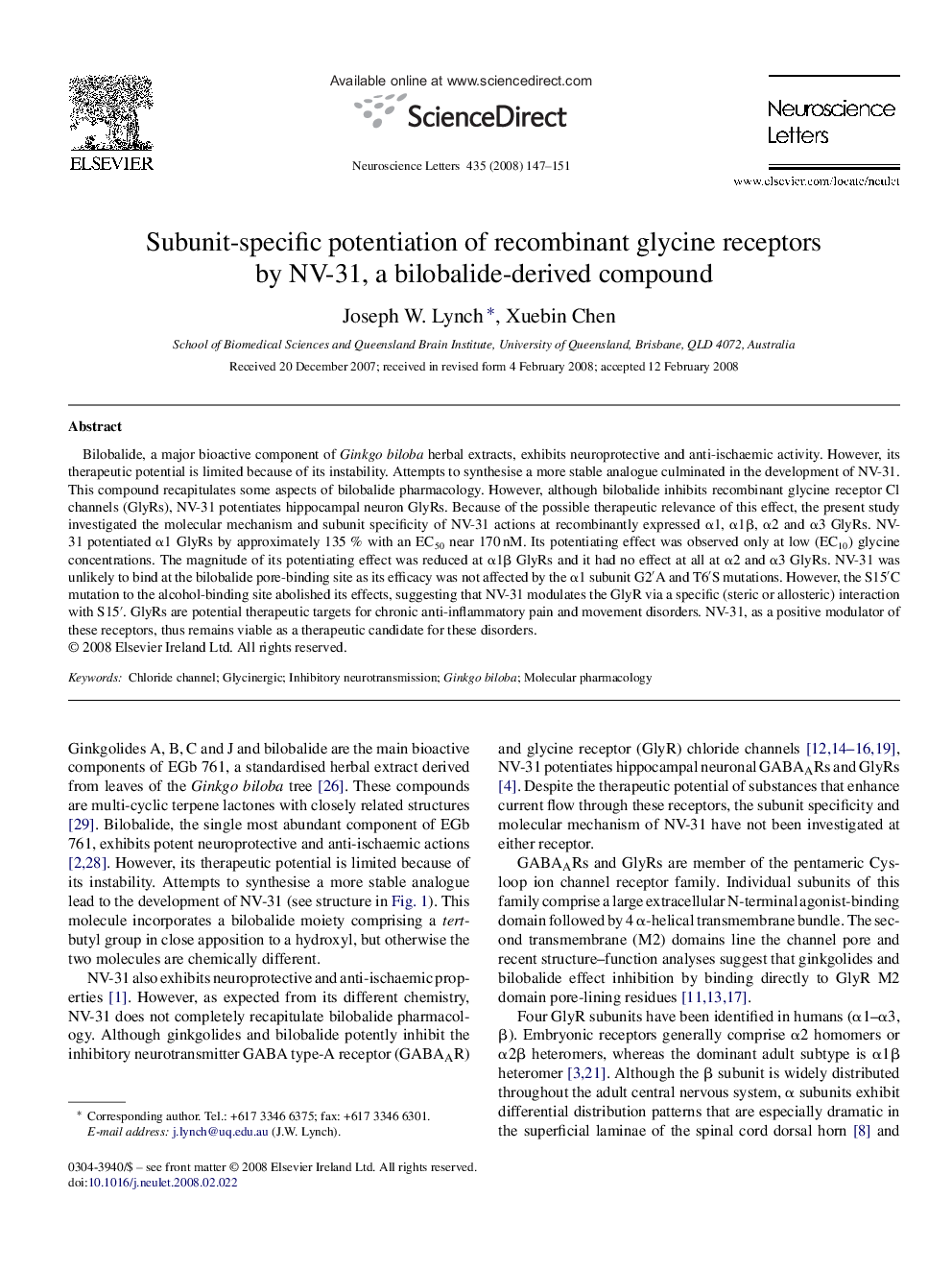| Article ID | Journal | Published Year | Pages | File Type |
|---|---|---|---|---|
| 4348599 | Neuroscience Letters | 2008 | 5 Pages |
Bilobalide, a major bioactive component of Ginkgo biloba herbal extracts, exhibits neuroprotective and anti-ischaemic activity. However, its therapeutic potential is limited because of its instability. Attempts to synthesise a more stable analogue culminated in the development of NV-31. This compound recapitulates some aspects of bilobalide pharmacology. However, although bilobalide inhibits recombinant glycine receptor Cl channels (GlyRs), NV-31 potentiates hippocampal neuron GlyRs. Because of the possible therapeutic relevance of this effect, the present study investigated the molecular mechanism and subunit specificity of NV-31 actions at recombinantly expressed α1, α1β, α2 and α3 GlyRs. NV-31 potentiated α1 GlyRs by approximately 135 % with an EC50 near 170 nM. Its potentiating effect was observed only at low (EC10) glycine concentrations. The magnitude of its potentiating effect was reduced at α1β GlyRs and it had no effect at all at α2 and α3 GlyRs. NV-31 was unlikely to bind at the bilobalide pore-binding site as its efficacy was not affected by the α1 subunit G2′A and T6′S mutations. However, the S15′C mutation to the alcohol-binding site abolished its effects, suggesting that NV-31 modulates the GlyR via a specific (steric or allosteric) interaction with S15′. GlyRs are potential therapeutic targets for chronic anti-inflammatory pain and movement disorders. NV-31, as a positive modulator of these receptors, thus remains viable as a therapeutic candidate for these disorders.
